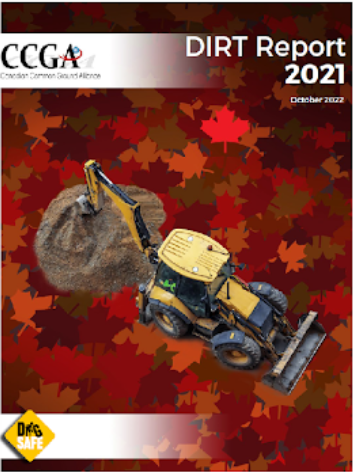
Finding the ROI in DIRT!
Every year the CCGA releases its signature report called the Damage Information Reporting Tool (DIRT) report. The DIRT report was designed to collect and record the data found in damage reports for damages made to underground infrastructure. It provides a summary and an analysis of damages reported throughout Canada in a form that users can easily breakdown, assess against their own damage prevention programs and look for improvements that can lead to a reduction in damages. Not many industries publish a book dedicated to their lack of success. Let's look at how we can use this lack of success to get a return on our investment in DIRT.
All through life, we have separated success and failure. We put them on opposite sides of the room and we want to be hanging with one and not the other. Success is good, failure is bad, bask in one and coverup the other, but as we all know failure is possible, even probable. Instead, lets leverage success from failure by bringing our successes and our failures closer together. When owned together they can balance each other out and bring value. Solutions are made in the middle, not from either end. When we act from the middle our successes are tempered because the chance of failure keeps us humble, and our misses not so bad because we already accept failure as possible. Keeping failure and success close gives us a better view, more resiliency and drive to keep moving the needle moving forward towards our stated goal of zero damages.
To begin to leverage success from failure, we have to understand the difference between a "good fail" and a "bad fail". You might be saying a damage is still a damage, the system obviously failed. But a lack of success is not a loss if we can learn something from it. In the DIRT report we analyze each damage and come up with a root cause. We put that root cause tougher with other utility experiences and compare. That root cause analysis is a success when we learn something from it and adjust our direction, moving us forward. If that root cause analysis leads us to making excuses about the outcome, then we move backwards and our investment in DIRT is fruitless. Making excuses also means we are less likely to go down that road again, ensuring we miss a potential opportunity and gain nothing.
If you think about it, We learn virtually nothing from our successes because we never look to understand why they worked. When we are successful, we want to stay there so we become a little more narrow minded and tend not to take further risks because we fear that inevitable chance at failure. Nobody wants to fail, but in order to leverage success and reap a positive return from failure we must learn from it, make adjustments and keep it moving forward. Try, Fail, and Try again.
So, the DIRT report can be a powerful ally in damage prevention but it comes with one caveat. The data in the report is completely voluntary and therefore does not represent all damages. We need everyone who owns infrastructure in Canada to make the effort to report into DIRT so that we all can make better decisions on the direction of policy. The more complete the data, the better the decisions we can make about our direction. Only by our collective input can we all learn from our success, and lack of success.

Author - Gordon Campbell, Aecon Group Inc.